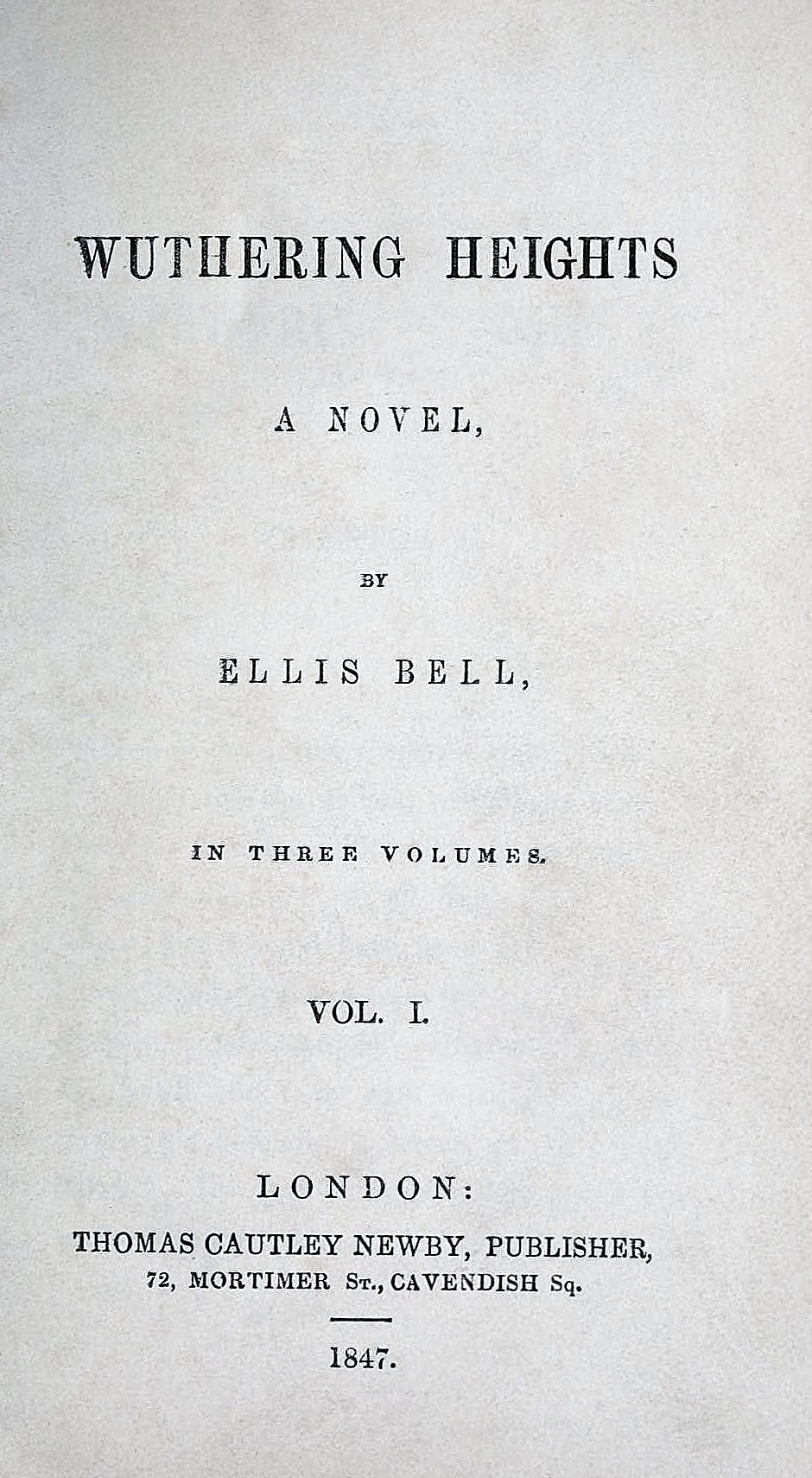 |
| Haworth Parsonage, 1860s. Source: Mick's Pad |
I’ve just finished re-reading Elizabeth Gaskell’s 1857 biography, The Life of Charlotte Brontë. The book caused widespread controversy on its first publication; lawsuits were threatened and readers were scandalised by Gaskell’s ventures behind closed doors, her attempts to reveal the private and ‘proper’ woman behind the famous writer. The Life of Charlotte Brontë certainly gives the lie to Victorian biography’s poor reputation for dryness and needless verbosity.
I first read Gaskell’s biography while researching and writing my doctoral thesis. As I re-read the work, I was struck again by a startling and allusive moment. Early in the biography Gaskell describes the remarkable habit of the three Brontë sisters, pacing up and down the parsonage sitting-room, sharing their ideas for writing, discussing their works in progress and ‘making out’ their plots. After the deaths of Emily and Anne, Charlotte continues this ritual alone:
Three sisters had done this,—then two, the other sister dropping off from the walk,—and now one was left desolate to listen for echoing steps that never came,—and to hear the wind sobbing at the windows, with an almost articulate sound. (381)
All the grim superstitions of the North had been implanted in [Charlotte Brontë] during her childhood by the servants, who believed in them. They recurred to her now,—with no shrinking from the spirits of the Dead, but with such an intense longing once more to stand face to face with the souls of her sisters, as no one could have felt. It seemed as if the very strength of her yearning should have compelled them to appear. On windy nights, cries, and sobs, and wailings seemed to go round the house, as of the dearly-beloved striving to force their way to her. (401)
Elizabeth Gaskell, The Life of Charlotte Brontë, ed. by Alan Shelston (London: Penguin, 1985)
 |
| Wuthering Heights, 1847 Source: Wikipedia |
The tone of these passages may surprise you—this is biography, remember, not fiction. But Gaskell’s biography is as lyrical and dramatic as any novel, and the more seasoned Brontë readers among you may well have been struck by something familiar.
Do you remember Lockwood’s dream from the opening section of Emily Brontë’s Wuthering Heights? Do you remember Heathcliff’s reaction to this dream?
I was lying in the oak closet, and I heard distinctly the gusty wind, and the driving of the snow; I heard, also, the fir bough repeat its teasing sound, and ascribed it to the right cause: but it annoyed me so much, that I resolved to silence it, if possible; and, I thought, I rose and endeavoured to unhasp the casement. The hook was soldered into the staple: a circumstance observed by me when awake, but forgotten. ‘I must stop it, nevertheless!’ I muttered, knocking my knuckles through the glass, and stretching an arm out to seize the importunate branch; instead of which, my fingers closed on the fingers of a little, ice-cold hand! The intense horror of nightmare came over me: I tried to draw back my arm, but the hand clung to it, and a most melancholy voice sobbed, ‘Let me in—let me in!’ ‘Who are you?’ I asked, struggling, meanwhile, to disengage myself. ‘Catherine Linton,’ it replied, shiveringly […] ‘I’m come home: I’d lost my way on the moor!’ (20)
[Heathcliff] got on to the bed, and wrenched open the lattice, bursting, as he pulled at it, into an uncontrollable passion of tears. ‘Come in! come in!’ he sobbed. ‘Cathy, do come. Oh, do—once more! Oh! my heart’s darling! hear me this time—Catherine, at last!’ The spectre showed a spectre’s ordinary caprice: it gave no sign of being; but the snow and wind whirled wildly through, even reaching my station, and blowing out the light. (24)
Emily Bronte, Wuthering Heights, ed. by Ian Jack (Oxford: Oxford University Press, 2009)
Gaskell transforms Charlotte Brontë’s act of pacing—and thus her continued attempts to write—into a ghostly haunting, employing a direct and explicit (yet unnamed, unspoken) allusion to her dead sister’s only novel. Thus she blurs the dividing line between life narrative and fiction. The biography appropriates the energy and fantasy of Emily’s novel, and strange moments like this punctuate Gaskell’s text. They typically deal with Brontë as a writer, whereas realist narratives are used to depict Brontë as a ‘proper’ woman. Here, therefore, the ghostly allusion to Wuthering Heights serves to displace Brontë’s act of writing, making it somehow ‘unreal’, strange and supernatural.
The allusiveness of Gaskell’s biography, its use and borrowing from a range of texts (declared or otherwise), reveals the permeable nature of genres and the artificiality of separate traditions where fiction and non-fiction are rendered asunder.
Very interesting.
ReplyDeleteI particularly liked;
"Three sisters had done this,—then two, the other sister dropping off from the walk,—and now one was left desolate to listen for echoing steps that never came,—and to hear the wind sobbing at the windows, with an almost articulate sound."
What a beautiful and evocative image, great stuff.
Fantastic, isn't it. And the allusion, dramatic and strange though it is, serves to create an incredibly poignant moment -- Charlotte as sole survivor and isolated 'genius'.
DeleteIt's such an interesting biography, although its willingness to depict the domestic sphere and 'private' family caused quite a stir! Mrs Oliphant certainly had some reservations:
"Mrs. Gaskell set an example in this book which has added a new terror to death and a new danger to those whose lives fall under that fierce light which beats not only upon thrones, but on many less exalted regions in these curious and all-inquiring days."
From 'The Victorian Age of English Literature', Vol. 1.